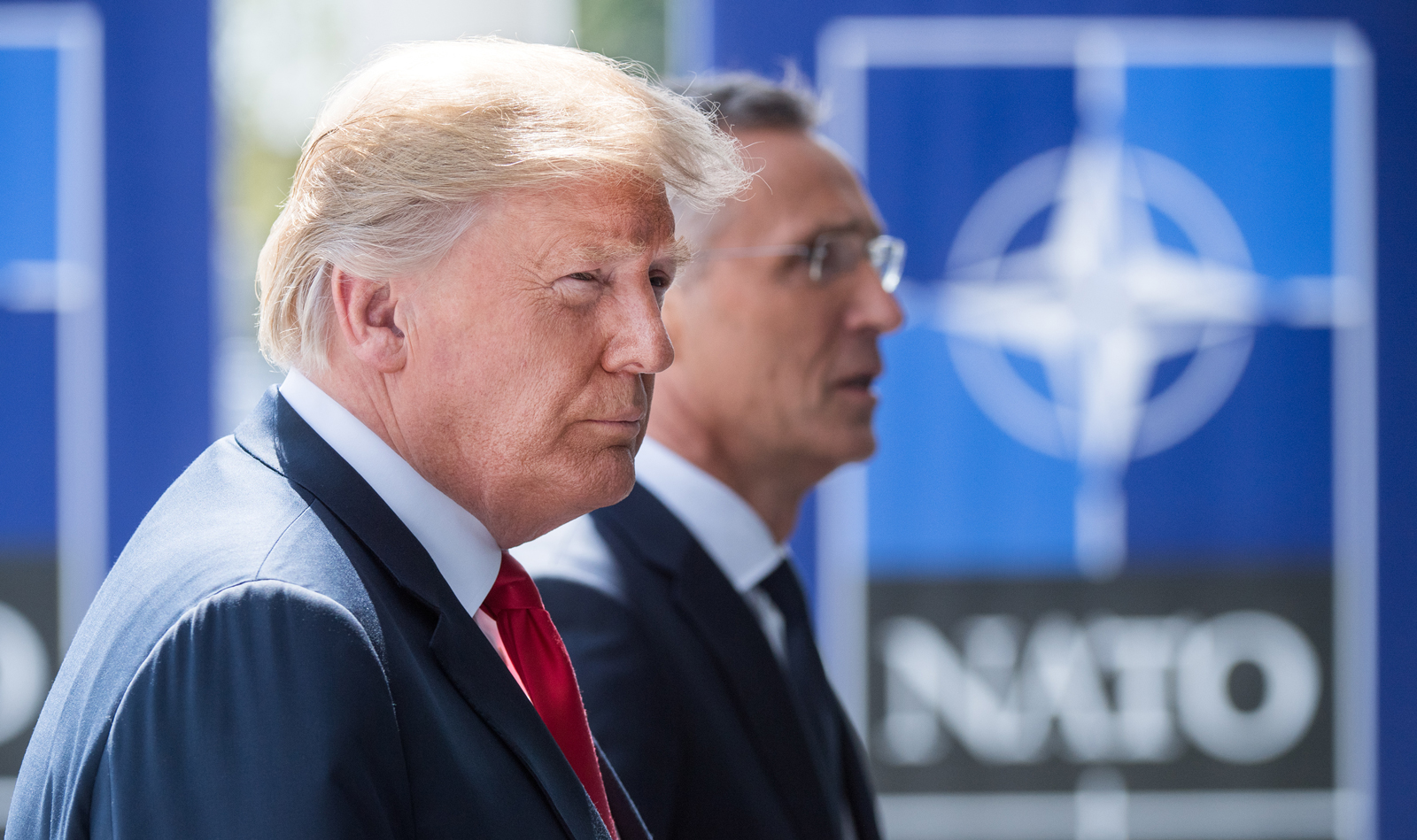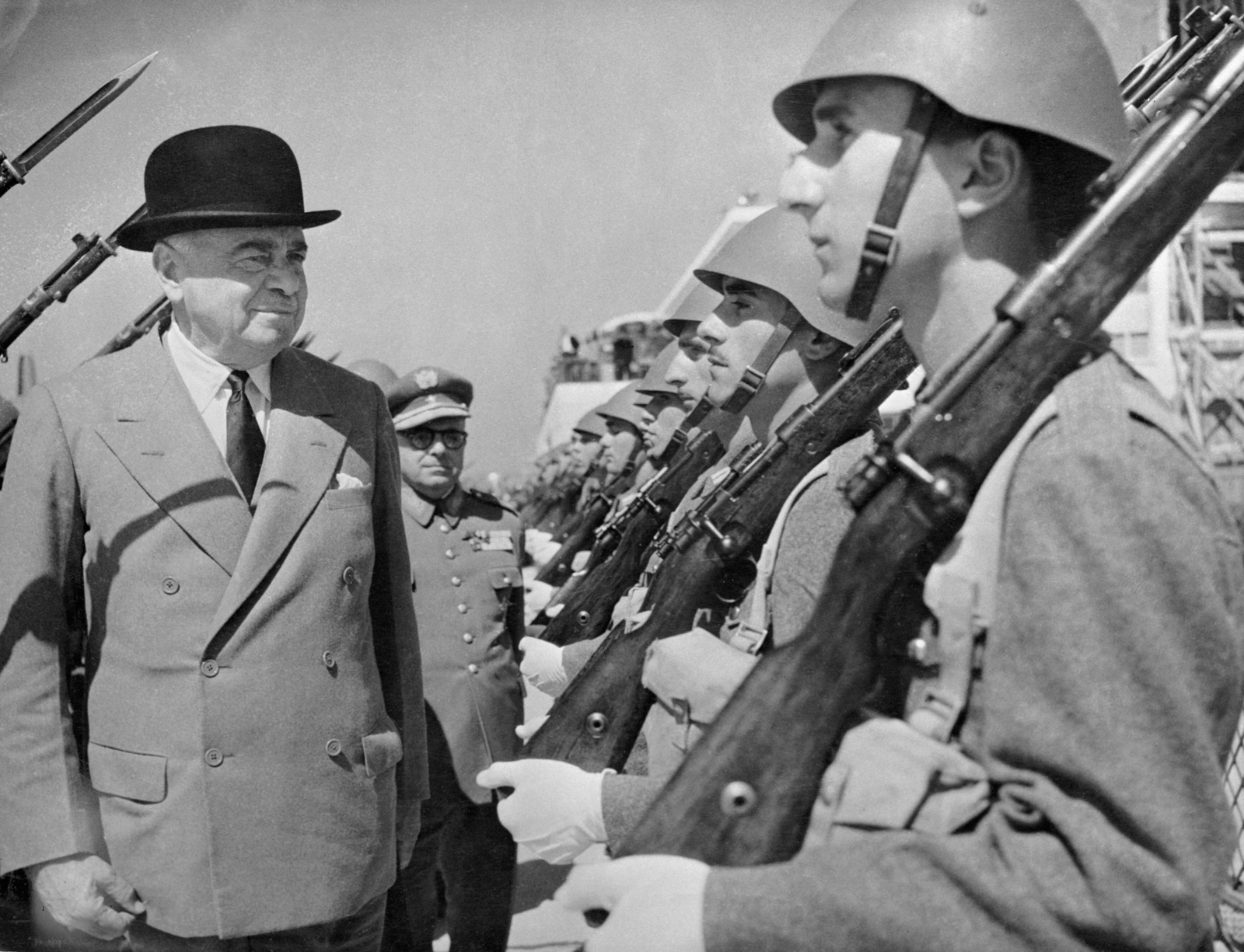In the run-up to July’s NATO summit in Brussels, President Trump prompted a flurry of concern within the US liberal establishment by voicing doubts about NATO’s continuing usefulness. He also attacked European countries for their trade policies, and called the alliance’s other members “delinquent” for failing to pull their financial weight. Then, in the wake of the meeting, he publicly questioned whether the US would come to the aid of Montenegro, the alliance’s newest member, in the event of a clash with Russia.
This was no way to treat what The New York Times editorial board, on July 8, called “the most successful military alliance in history,” “the core of an American-led liberal world order.” Alexander Vershbow, a former NATO deputy secretary general, worried that Trump was “turning at least his base, and maybe other Americans, against NATO and against US global leadership.” Nicholas Burns, a former US ambassador to NATO, observed on July 11 that “it has been shocking to see how far from grace the United States has fallen in the eyes of its allies,” and that “a dangerous breach has opened in the trans-Atlantic alliance.”
Behind Trump’s bullying and bluster, though, the core message he delivered in Brussels was not that different from those given by previous administrations. Indeed, the same kvetches have recurred under every US government, Democrat and Republican alike, since the end of World War II. Even before NATO was founded in 1949, there were disagreements between the US and UK over how to divide the burden of the postwar transatlantic security architecture; Wallace Thies, in his 2002 book on NATO, Friendly Rivals, dubbed it “an argument even older than the alliance itself.”
Eisenhower grumbled to his national security team in 1958 that “we should ask the European governments to what extent they intend to continue leaning on the US.” Kennedy insisted at a National Security Council meeting in 1963 that “we cannot continue to pay for the military protection of Europe while the NATO states are not paying their fair share and living off the fat of the land.” Nixon’s Under Secretary of State Elliot Richardson reiterated the message in 1970, saying, “The United States believes that our European allies can and should do more.” In 1977, Carter, too, called for a significant upgrading of NATO capabilities, and set the other members a target for military spending of 3 percent of GDP. Even as Reagan massively increased US military spending, the 1985 National Defense Authorization Act repeated the appeal to NATO allies to hike their own expenditures.
NATO summits under Clinton and George W. Bush likewise involved regular exhortations to allies to finally meet the targets that had previously been agreed on. At the 2002 Prague summit, for example, Bush extracted a verbal promise from the other members to increase their military spending to at least 2 percent of GDP (they had almost all fallen well short of the 3 percent target set in 1977). But it was only under Obama, at the Wales summit in 2014, that this was formalized in an official agreement signed by all member states, specifying a deadline of 2024.
The timing of the deal was unfortunate, since governments across Europe were at that moment slashing budgets to deal with the fallout of the global financial crisis. By 2017, only four NATO members besides the US had crossed the 2 percent threshold: Estonia, France, Greece, and Turkey. Poland and Romania had edged close to it, while the UK had slipped below the line thanks to Theresa May’s sweeping budget cuts. Everyone else was far behind—or “delinquent,” as Trump chose to put it last month.
So why the sudden concern, if US complaints about their allies’ military and financial contributions are nothing new? Liberal anxieties about NATO stem more from discontent with Trump’s brusqueness and his discourteous tone—at a rally in Montana in early July, he said “we’re the schmucks paying for the whole thing,” and claimed to have told German Chancellor Angela Merkel, “I don’t know how much protection we get by protecting you”—than from the actual substance of US policy toward the alliance, which has remained remarkably consistent over time. Rhetorical differences aside, successive US governments have always been clear that NATO is not a gathering of peers. Its function has been to bind European states into an international order dominated by the US—and to do it on Washington’s terms. NATO communiqués talk about shared security goals, but it has always been the US that determines what those goals are; they are only shared after the fact. From that point of view, browbeating from Washington has been a structural feature of the alliance from the outset.
Since the end of the cold war, moreover, the relationship between the US’s national security goals and the actual security needs of its European allies has become increasingly distant. The very expansion of NATO, driven largely by the US’s strategic imperatives, is a clear demonstration of this gap. The Organization had originally been founded, in the famous phrase attributed to Lord Ismay, its first secretary general, to “keep the Soviet Union out, the Americans in, and the Germans down.” But with the fall of Communism, the first of these core functions vanished, along with the USSR itself, and the question arose as to whether NATO, too, should disappear.
Advertisement
The answer arrived at by the Clinton administration was, on the contrary, to turn NATO into the cornerstone of a vast strategic expansion. The goal, as Carter’s former security adviser Zbigniew Brzezinski put it in 1994, was to fill “the potentially destabilizing geopolitical no man’s land between Russia and the European Union.” Membership invitations were extended first to Poland, Hungary, and the Czech Republic, which acceded in 1999, and then to the rest of the former Warsaw Pact and the ex-Soviet republics in the Baltic, which joined in 2004. Although the Russo-Georgian war of 2008 briefly halted the momentum of NATO’s expansion, it has resumed since Russia’s 2014 annexation of Crimea and intervention in eastern Ukraine: Montenegro joined in 2017, Macedonia has now been invited in, and closer ties have been forged with Ukraine, whose president, Petro Poroshenko, attended the Brussels summit, where he affirmed that “Ukraine’s future is in NATO.”
NATO expansion was designed above all to enable the US to have a guiding hand in the post-Communist transformation of Eastern Europe. Much has been made in recent years of a growing threat to NATO’s eastern flank from a resurgent Russia. But it is important to register that this threat was of little account in the original decision to expand NATO in the early 1990s. On the contrary, the absence of a serious challenge to the West from a greatly weakened Russia was a crucial enabling condition for it.
Economically crippled after the collapse of the USSR, politically in turmoil, militarily enfeebled to a degree not seen since the civil war of 1918–1921, Russia was in no position to offer more than rhetorical resistance to NATO expansion. But military considerations were, in any case, distinctly secondary: at the time, much greater emphasis was placed on economic and political matters. In 1993, Clinton’s national security adviser Anthony Lake argued that “[t]he successor to a doctrine of containment must be a strategy of enlargement—enlargement of the world’s free community of market democracies.” In early 1995, when Defense Secretary William Perry laid down the “Perry Principles” for would-be NATO members, a commitment to “democracy and markets” notably came first—with “defense of other allies” much further down the list.
It was the relative downplaying of its military-strategic dimensions that led several senior figures in the US foreign policy establishment to oppose NATO enlargement at the time: the diplomat and historian George Kennan, for example, dubbed it a “fateful error.” Critics warned that expansion would bring NATO into direct contact with its former adversary across much of Europe’s breadth, creating a chain of potential flashpoints—scarcely a recipe for increased security. Not only that: by confirming Russia’s growing sense that the US intended to press home its post-cold war advantage—in violation of promises we now know several Western leaders made to Gorbachev over the course of 1990 and 1991—the expansion would help to legitimize a return to a more confrontational stance on Russia’s part.
That prediction has certainly been borne out. In this sense, NATO expansion itself helped to generate the threat it was supposedly intended to counter. The rise in tensions between Russia and the West over the past decade, meanwhile, has highlighted the questionable wisdom of admitting to NATO the string of countries along Russia’s western border. Militarily, these new members were at best only ever going to make marginal contributions to the alliance. On the other hand, they have added significantly to NATO’s obligations for collective defense, under Article 5 of the organization’s charter. Indeed, while the alliance’s growth was notionally premised on the idea of extending the US security umbrella, it is not at all clear that Europe has, as a result, become any safer. Ukraine, where the US and Russia are effectively engaged in a proxy war, is a case in point: the deadly confrontation there has its origins in a contest between Washington and Moscow for Ukraine’s allegiance, which in turn developed inexorably out of the decision to expand NATO in the 1990s.
Advertisement
That decision, made in the glow of an unprecedented American dominance of the global stage, was founded not on a collective assessment of Europe’s likely security needs during the post-cold war peace, but on Washington’s unchallenged sense of its own priorities. An alliance that had served as the linchpin of the US-led international order since World War II was subordinated still more firmly to the US’s specific foreign policy goals. There have been other notable cases since—the invasion of Iraq being the most obvious—where US goals have diverged markedly from those of its allies. Such differences have always existed to some degree, but the more the US has insisted on its prerogatives as the world’s sole superpower, the harder bodies such as NATO, as one of the most reliable instruments of US global power, have had to work to paper over them.
The foreign policy course on which the Trump administration is embarked—including the revocation of the Iran nuclear deal; exacerbation of the conflict in Israel–Palestine; continued antagonism with Russia; destabilizing trade wars—is likely to multiply sources of discord with Europe. For all that, NATO’s European members are clearly not going to try to overhaul the alliance in the near future, let alone consider scrapping it. On the contrary, they appear to have embraced their subordination ever more closely. The final declaration of the Brussels summit—apparently agreed in advance with American officials so that Trump couldn’t suddenly alter it—included a commitment by all NATO members immediately to increase military spending. Not only that, they also agreed to US Defense Secretary Jim Mattis’s demand for the creation of a new NATO rapid-reaction force by 2020. Dubbed the “Four 30s,” it will consist of thirty battalions, thirty air squadrons, and thirty warships, ready to deploy within thirty days.
Thus, for all the concerns about the impending collapse of the liberal international order expressed before and after the Brussels summit, it was, from a US point of view, a resounding success. As the headline of a New York Times editorial on July 12 acknowledged, “Trump Got From NATO Everything Obama Ever Asked For.” Far from being anomalous or atypical, the Brussels summit neatly encapsulated the power dynamic between the US and NATO: Washington issues instructions, politely or otherwise, and its European allies fall into line. A former secretary of the US Air Force under Obama called the Brussels meeting “one of the meatiest NATO summits that I can recall.” It’s clear, though, who eats and who is eaten at this particular table.




